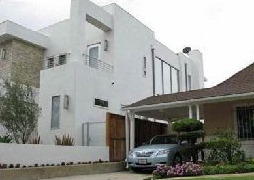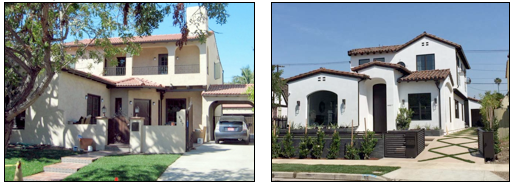PLANNING LA-Angelenos from Boyle Heights to Bel Air know that a 2008 citywide ordinance to stop mansionization failed utterly. In the seven years since the “Baseline Mansionization Ordinance” passed, developers have continued to strip-mine the city, destroying the scale and character of established neighborhoods with houses far too big for their lots. In fact, teardowns have accelerated: According to the Department of Building and Safety, single family home demolitions last year were 30 percent higher than the year before and up more than 240 percent compared to 2010.Los Angeles has a second chance to get it right: Councilmember Paul Koretz proposed simple, straightforward amendments that close the loopholes in the Baseline Mansionization Ordinance (or BMO). The Council adopted the Motion in May 2014. Now, after more than a year of throat-clearing (and stopgap ordinances called ICOs for some of the hardest-hit neighborhoods), the Planning Department is finally about to start work on the amendments.
The way forward is neither straight nor smooth. Developers make a lot of money exploiting LA neighborhoods, and they want to keep the game going. Prepare to hear unfounded claims and bogus arguments from the speculators, their lobbyists, and their best friends at City Hall:
“The proposed limits are extreme.”
In fact, the ICOs strike sensible balances, and Councilmember Koretz’s proposed amendments to the Baseline Mansionization Ordinance (BMO) would still allow spacious, comfortable family homes. On a typical 6,000 square foot lot, the amended BMO would allow a house of about 3,000 square feet.
The Beverly Grove overlay ordinance, passed in October 2013, is a good proxy for the ICOs and BMO amendments. Photos of conforming houses show just how accommodating and reasonable these measures actually are.
“I have a right to do what I want with my property.”
Up to a point, yes. But zoning limits property rights in order to promote compatible development. On a small city lot, no one can keep a horse or throw raucous all-night parties four times a week. And no one should be permitted to violate the scale and character of his neighborhood or impose on her nearest neighbors.
“Mansionization lifts property values, and tighter limits on home size depress values.”
No, and not really. Mansionization makes a quick buck for speculators, but oversize houses make adjoining properties less appealing. Local realtors conservatively estimate that McMansions cost their next-door neighbors $50,000 to $100,000 in property value. Appropriate regulation promotes stable long-term property values across entire communities. In the city’s historic zones – subject to much tighter regulation than the proposed mansionization measures – property values have held strong.
“Our house needs to accommodate boomerang kids and aging parents.” Family size and structure are irrelevant. You cannot raid your neighbor’s cupboard to feed your family. What entitles you to take his air, light, and privacy to house your family in grand style?
“The city is rushing things.”
Rushing things? It has been eight years since our City Planning Commission identified “neutralizing mansionization” as one of ten key planning goals and principles. It has been seven years since the city passed the BMO, an ordinance so riddled with dubious bonuses and exemptions that it permits 4,350 square foot boxes on 6,000 square foot lots – to say nothing of mega mansions in grander neighborhoods.
It has been over a year since the City Council approved Councilmember Koretz’s Motion to close the loopholes in the BMO. Developers rushed to fill the pipeline, so eight months ago, city planners outlined a half-dozen temporary ordinances (ICOs) to slow the destruction. But the ICOs have a short shelf life, and the city needs a permanent fix.
If more arguments were needed to make the case for better regulation, consider these:
Mansionization is hell on the environment. It turns existing houses into debris and consumes massive amounts of material. The big boxes guzzle energy for heating and cooling. McMansions replace mature trees with saplings and pave over permeable land. Careless construction practices routinely kick up toxic materials.
Mansionization makes housing less affordable. As the supreme court of the state of Massachusetts put it, “The expansion of smaller houses into significantly larger ones decreases the availability of would-be ‘starter’ homes in a community ... excluding families of low to moderate income from neighborhoods.” Flashy McMansions price out all but the most affluent buyers.
Mansionization violates the city’s core policies and principles. For starters, it violates the citywide General Plan Framework, which pledges to “Ensure that the character and scale of stable single-family residential neighborhoods is maintained, allowing for infill development provided that it is compatible with and maintains the scale and character of existing development.” Then there’s the Planning Commission’s goal of “neutralizing mansionization.” And mansionization clearly flies straight in the face of Mayor Garcetti’s recently-unveiled environmental initiatives.
Their tired, threadbare arguments don’t pass the smell test, but developers still have outsize influence at City Hall. They hollowed out the city’s “Baseline Mansionization Ordinance” the first time around, and they mean to do it again.
Stakeholders around the city must push back hard. We must demand quick, decisive action to close the loopholes that make mansionization possible.
(Shelley Wagers is a neighborhood activist who has campaigned for the last ten years to stop mansionization in Los Angeles. She is an occasional contributor to CityWatch. For more information, please log on to www.nomoremcmansionsinlosangeles.org or send email to [email protected].)
-cw
CityWatch
Vol 13 Issue 57
Pub: Jul 14, 2015
Explore
Our mission is to promote and facilitate civic engagement and neighborhood empowerment, and to hold area government and its politicians accountable.

 CityWatch Los Angeles
Politics. Perspective. Participation.
CityWatch Los Angeles
Politics. Perspective. Participation.
19
Sat, Apr





